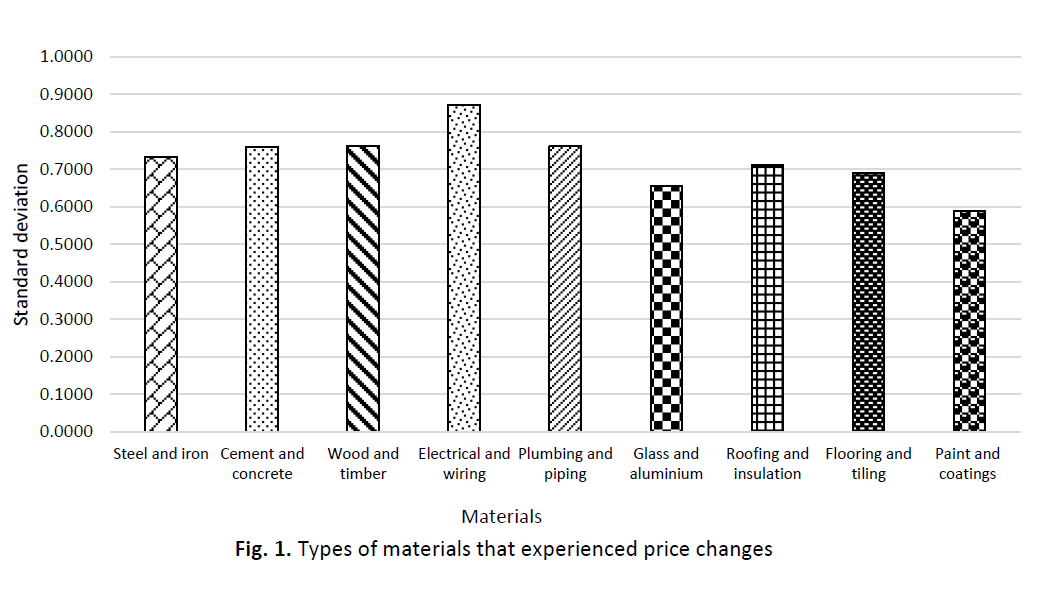Impact of Price Fluctuations on Construction Materials in Malaysia
DOI:
https://doi.org/10.37934/sijmaf.5.1.111Keywords:
Construction materials, SDG 9Abstract
The post-pandemic period has significantly impacted construction material prices. Disruptions caused by the pandemic have affected the construction industry, leading to fluctuations in material costs. This study aims to investigate the effects of post-pandemic construction material price changes in Malaysia. The objectives of this study are to categorize the types of materials affected by price changes, identify the types of construction works impacted, and propose strategies to mitigate these effects as in Sustainable Development Goals (SDG 9) industry, innovation and infrastructure. Through surveys, respondents’ opinions were collected and analysed by SPSS to assess the impact of material price fluctuations. Essential construction materials such as steel, cement, and lumber, which are widely used in various projects, have experienced significant price changes. Factors such as factory closures and transportation disruptions have led to material shortages, increasing demand and causing price volatility. These fluctuations have affected different construction sectors, including residential construction, infrastructure projects, commercial developments, and renovation works. The data collected revealed notable price variations resulting in cost overruns and challenges in budget management and project scheduling. To address these challenges, the construction industry needs to adopt effective strategies to navigate the financial and operational impacts of material price fluctuations.









